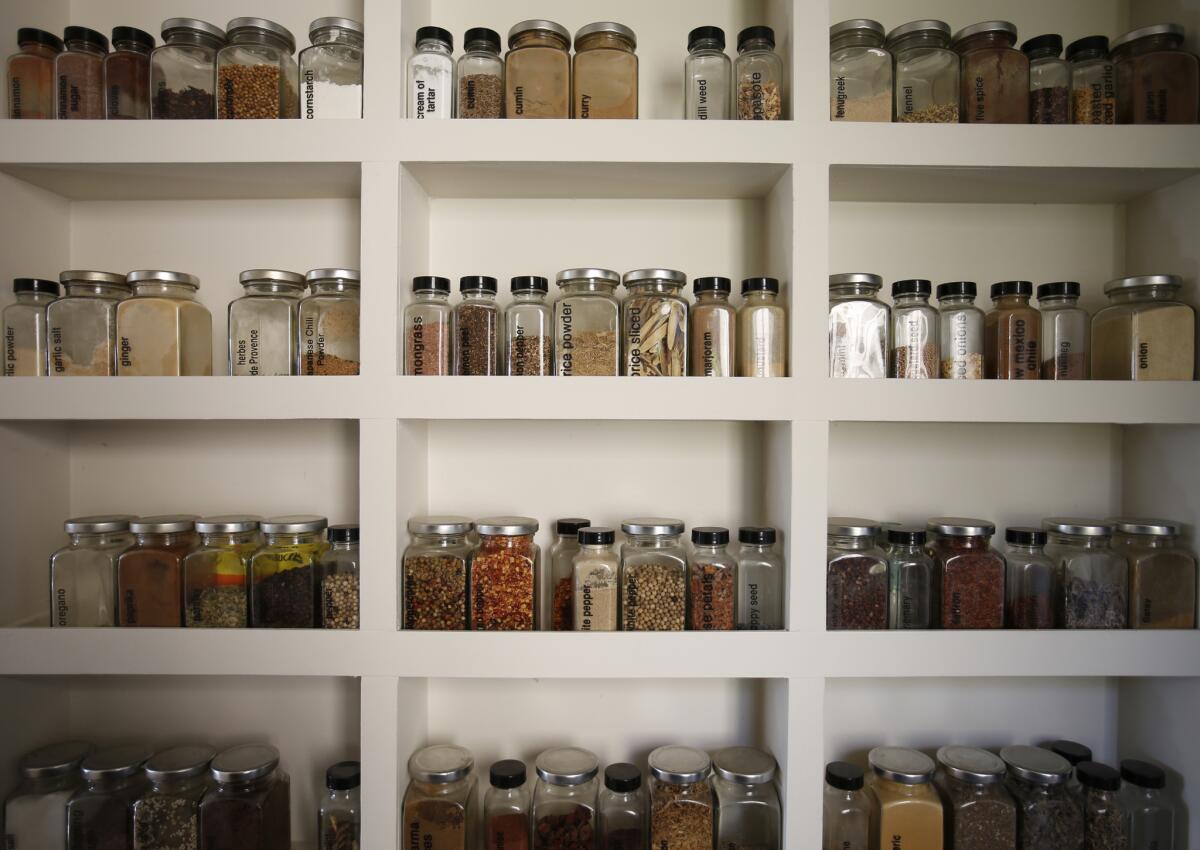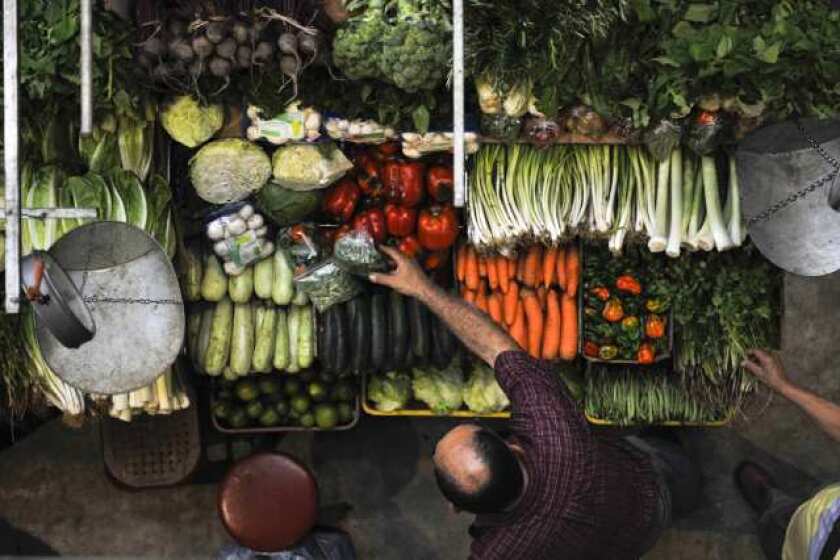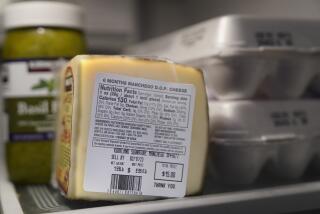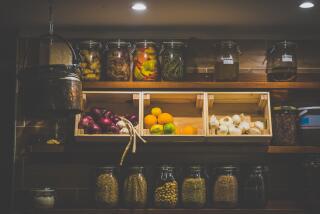You bought a lot of ingredients to face coronavirus. Here’s how to organize them

- Share via
Life can be overwhelming but cooking doesn’t have to be. If anything, it’s a wonderful, therapeutic process, especially if you start with a smart kitchen setup. Right now, you may have more ingredients than you know what to do with. I learned over decades in restaurant and test kitchens the best ways to organize high-volume ingredients and ensure they all get used. Here’s how to set up your pantry, fridge and freezer to make daily cooking easier — and enjoyable — and to avoid food waste:
1. Out with the old. I hate wasting food, but now’s a good time to toss whatever’s haunting the dark corners of your pantry. With the exception of infant formula, “best by,” “use by,” and “sell by” dates on nonperishables are neither federally regulated nor are they indications of food safety. Do a sniff and tiny taste test just to be sure they’re OK. (But always dump dented cans or bulging jars.) Throw out any perishables that look or smell off in the fridge. While you’re at it, wipe down all the shelves too. If there’s something that’s been lingering too long but it’s still OK, put it on a to-cook list for the week ahead.
2. Keep (ingredient) families together. Sort goods by function (main ingredient, sides, seasonings, etc.), so you can choose from options at a glance and easily pluck what you need.
- In the pantry, keep oils and salts nearest your prep area; place vinegars next to sauces, spices with dried chiles, bonito flakes and other dried flavorings. Create a baking zone with the basics of flours, sugars, baking powder and soda, and extracts all together near the chocolate and sprinkles. Set up a choose-your-carb cabinet of rice, grains, pasta and noodles, and put dried beans and quinoa in there too. Tetris jars, cans and boxes by type, stacking vegetable cans with broths, tinned seafood with canned beans, pasta sauces with salsas, peanut butters with jellies.
- In the fridge, save a produce drawer for fruit and another for vegetables and line the door shelves with condiments and pickled and fermented goods. Put meat and seafood on the lowest shelf and eggs, dairy and any remaining vegetables on higher ones.
- For the freezer, sort by meat, seafood, vegetables, sauces and stocks. Keep oily staples that go rancid quickly — nuts, seeds and whole grains — in the freezer too.
Freezing vegetables, bread, fruit and aromatics is a valuable skill to learn for stocking your larder with nutritional foods.
3. Pack it up, pack it in. Once you open a package, repackage it in a stackable container because having pounds of rice spill all over your shelves and floor when a rubber band snaps is no fun. (I am speaking from experience.) In restaurants, chefs use sturdy quart- and pint-sized deli containers. They seal tightly and stack easily. At home, I use glass jars (including rinsed and dried old pasta sauce ones) and Oxo’s POP bins. Any airtight container will do.
4. Label and date everything. Keep track of repackaged ingredients and leftovers to know what they are and when they should be used (there are guidelines on the USDA FoodKeeper App). Write the ingredient and date on painter’s tape or masking tape with a Sharpie and stick it on the container. In professional kitchens, cooks fill out spreadsheets that list ingredients in-house, their quantities and dates of storage. If you have too much food to keep track of at a glance, you may want to note what you have to avoid waste.
5. Keep an eye on it. We’re much less likely to use ingredients we can’t see. Move opened packages and fresh items that won’t last closer to the front of the pantry and fridge. Cascade unopened ingredients with the tallest in back, shortest in front, like on school picture day.
6. You choose, you don’t lose. One of the hardest parts of cooking at home is deciding what to make. Follow all the steps above and the choice is much easier. Use whatever may spoil, wilt or otherwise not-last-long first. Pro cooks have the advantage of a mental catalog of recipes and techniques that employ any ingredient they find. You have us. We have thousands of recipes for you. If you need more ideas or advice, email us at [email protected] and we’ll help you out.
Here are eight tips for cooking clean in your own kitchen to prevent germs from spreading and to make the cooking process more pleasurable.
More to Read
Eat your way across L.A.
Get our weekly Tasting Notes newsletter for reviews, news and more.
You may occasionally receive promotional content from the Los Angeles Times.












